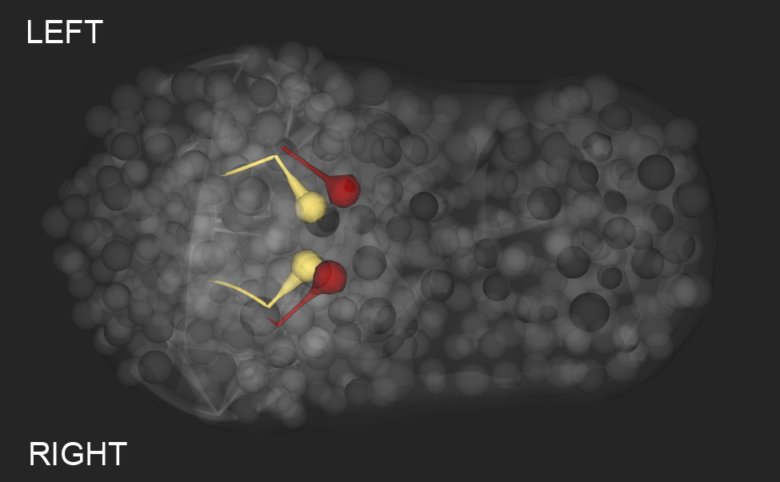Figure: Pioneer (yellow) and follower (red) axons on the left and right sides of a C. elegans embryo.
The nervous system of animals is mainly bilaterally symmetric at the anatomical level. While some molecular and functional left-right asymmetries exist, the extent of these asymmetries remains poorly characterized. In this interdisciplinary study, the Bertrand team, in collaboration with the Villoutreix team at MMG, analyzed the mechanisms that generate bilaterally symmetric axonal projections in the C. elegans embryo. Using a combination of single-cell RNA sequencing data analyses and candidate approaches, they identified a left-right asymmetric molecular program regulating bilaterally symmetric axons. This program involves a bHLH transcription factor and two downstream axon guidance molecules of the ephrin and Flamingo families. These genes are left-right asymmetrically expressed in the nervous system and regulate axon projections in a left-right asymmetric manner.
This study identifies novel molecular left-right asymmetries in the nervous system and reveals that even bilaterally symmetric structures can be generated via asymmetric developmental genetic programs.




